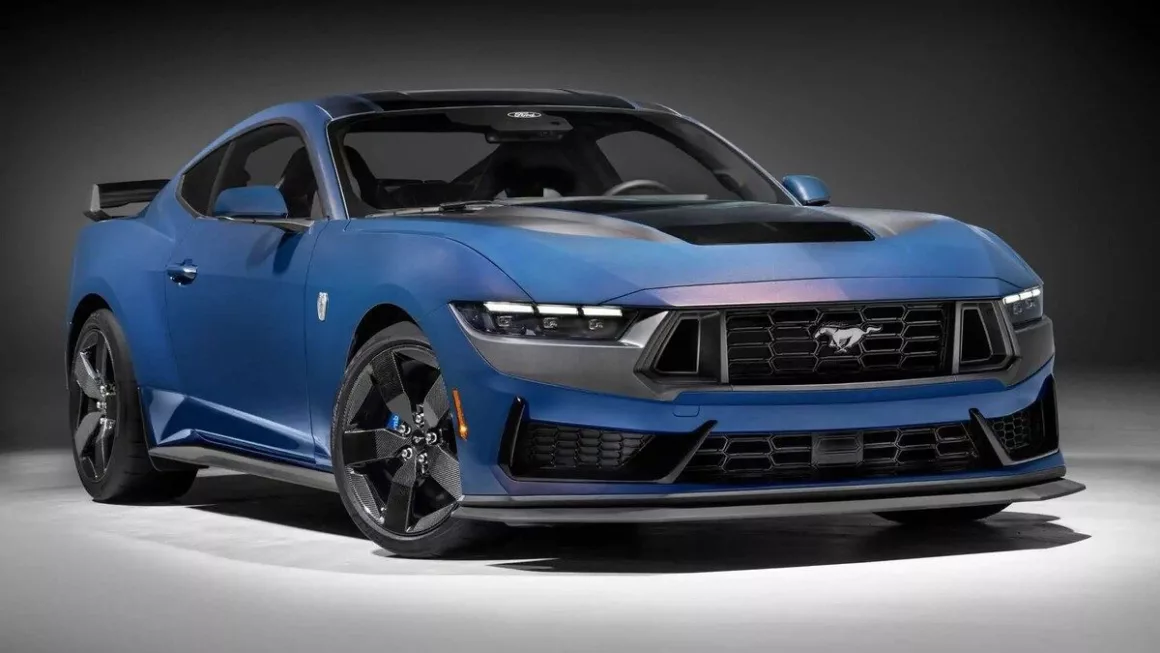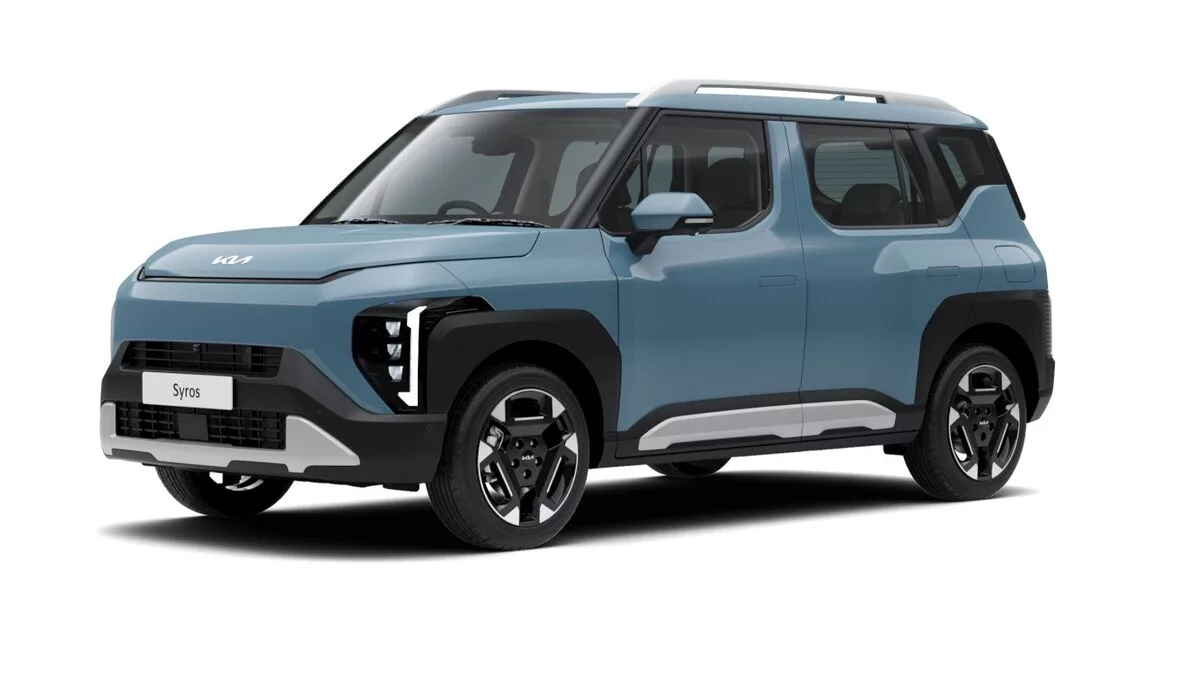Over 60 years of a titanic legacy. More than 10 million units sold worldwide. Radical stats like these exhibit how strongly the legendary Ford Mustang has tugged at the heartstrings of car lovers all around the world. When launched in 1964, the Mustang gave birth to a new car category – Pony cars – small sporty cars which are both stylish and affordable, some of the most coveted cars in the world today. However, across its run, the Mustang has evolved to fit the bill with ever-changing demands of the industry and buyers, while retaining the character that made it a star. In this article, we dive into the story of the Ford Mustang and learn what the Mustang brand is in this day and age.
Brief History of Ford Mustang
It all started when Ford envisioned a dream car for the youth in 1960. Their research found, nearly 46 percent of new car buyers were young, enthusiastic individuals who wanted a car that matched their spirit, felt like a sports car, and yet was affordable. Meanwhile, an entire generation was coming of age and there were more young college graduates than ever. The American auto-giant saw a potential gold mine.
To capitalise on a huge youth market, Lee Iacocca, who was then the vice president and general manager of Ford, began developing a concept car in the early 1960s. Within only 18 months, they were ready with the first concept model, which they named after a World War II fighter plane – P-51 Mustang. It was a two-seater model named Mustang I concept car, with a mid-engine layout, and a considerably long nose that eventually became a hallmark of the Mustang.
The second concept of the Mustang came into the picture in 1963. It was a four-seater model, a configuration closest to what was eventually made.
Establishment of an icon
While Ford refers to all the first-year models of the Mustang as 1965 models, they had made many changes to the units produced after August 1964, when they had already sold over 1.2 lakh units. This is why the early batch of Mustangs is often referred to as the “1964½” models, and later as “1965” models.
When Ford unveiled the first-gen Mustang at the World’s Fair in New York, on April 17, 1964, they already had its models at dealerships – ready for sale. It was a marketing masterstroke. Getting a distant view of the Mustang at the Fair made people so excited that they rushed to dealerships to appraise it closely and buy it as soon as possible. Ford had targeted sales of 1,00,000 units for the first year. But about 22,000 units were sold on the first day, and they sold over 4,00,000 lakh units that year. This was when they knew Mustang had taken the world by storm and Ford was onto something huge.
The first line-up of the Mustang was available with a 2.8-litre straight six-cylinder engine, a 4.3-litre V-8 engine, and the legendary 4.8-litre V-8 engine which produced up to 271 HP.
From the inception of the Mustang, Ford had worked with Carroll Shelby, an esteemed automotive engineer, racing driver, and entrepreneur. In 1968, the legendary man took 100 of the first batch of four-seater Mustangs and modified them to ‘GT350’ models which could produce 340 HP. Moreover, along with lowering the suspension, he removed the rear seats and added performance components such as large brakes, a fibreglass bonnet, and oversized tyres on 15-inch wheels. The GT350 competed in the Sports Car Club of America for class B Production racing. It was Ken Miles who raced the GT350 to victory for the first time, while the car won the same race thrice in a row.
From here on, Ford kept on making sportier versions of the Mustang. Their names would start with GT and production ran parallel to the production of standard Ford Mustangs.
By the end of 1965, over 6,81,000 Mustangs were sold, shattering many car sales records. In 1966, the one-millionth Mustang rolled off the production line as the demand remained consistently strong. With sales what also grew was Mustang’s size. The grown 1967 model accommodated a larger engine, whereas the 1969 model gained a few inches of length.
Evolving as needed
The dream run of the Mustang saw a huge hurdle in the form of the oil crisis of the 1970s, which shocked the entire auto industry. In the latter half of the decade, the Mustang’s size decreased and so did its power. The second-generation Mustang, launched in 1974, came equipped with an uninspiring 2.3-litre four-cylinder engine which produced 88 HP and a 2.8-litre V-6 engine which produced 105 HP. It was available as a notchback or hatchback. While this wasn’t the Mustang driving enthusiasts fell in love with, the change was much needed and the consumers accepted that readily. Ford sold more than a million units of the second-generation Mustang – a walloping success. As the end of the decade brought the end of the oil crisis, the masses demanded something which honoured the legacy of Mustang, rather than an economical car.
Developments in 1980s and 1990s
In 1979, Ford launched the third-generation Mustang, built on a new platform called “Fox.” This model brought back the vigorous character of the Mustang. It was an instant hit and became a status symbol among the youth. Available in both notchback and hatchback versions, this Mustang offered a range of engine options which included a small 2.3-litre four-cylinder engine to the signature 5.0-litre V-8 engine.
American police forces saw these Foxbody Mustangs as well-suited vehicles for them and soon, Ford began manufacturing Mustangs for police services. These models were equipped with the 5.0-litre V-8 engine mated to a 4-speed manual transmission.
When the sales of the Mustang began falling towards the end of the 1980s, Ford was ready with an all-new generation. The fourth-generation Mustang was launched in 1994; it was codenamed SN95. While the Fox platform continued to be its foundation, Ford performed a significant redesign and made it look sportier and curvier than the earlier generation. Even though it packed a solid punch, its suspension was tuned for a slightly softer ride. Like the earlier model, the SN95 Mustang was equipped with a range of engines including a base engine 3.8-litre V-6 and 4.9-litre V8. This generation remained on sale for 11 years and sold over 1 million units.
Racing ahead as others hung back
History proves that Ford never shied away from taking on challenges, even when its competitors hung back, accepting the volatility of the auto industry. At the beginning of the 2000s, most automakers were nervous about the rapidly changing market demands. In 2002, Chevrolet discontinued the Camaro, leaving the Mustang as the only of its kind out there. The launch of the fifth-generation Mustang in 2005 rocked the market and the sensation it set off was not seen since the reveal of the first Mustang around 40 years back. Taking notice of this, Chevrolet began to bring back the Camaro and Chrysler resurrected the Dodge Challenger, only to compete with the Ford Mustang. Taking on a new moniker ‘S197’, the fifth-gen Mustang ditched the Fox platform and it was the first Mustang built on its own platform. The design of the S197 Mustang was inspired by two luxury cars, the Lincoln LS and Jaguar S Type. The base variant of the S197 Mustang was equipped with a 4.0-liter V-6 engine that produced 210 HP, while the 4.6-liter V-8 engine now produced around 310 HP and 433 Nm.
In 2010, to thwart the new Chevrolet Camaro, the fifth-gen Mustang received a facelift. In 2011, Ford gave it two new engines: a 3.7-litre V-6 which produced 305 HP and a 5.0-litre V-8 which put out 412 HP and was codenamed Coyote. With its outstanding performance, the S197 posed a great challenge to the far more expensive BMW M3.
In 2013, Ford launched a special Mustang called the Shelby GT500. This Mustang produced 662 HP and had a top speed of 202 mph. It was a tribute to Carroll Shelby, who passed away in 2012.
50th anniversary and conquering the modern age
Launched in 2015, the sixth-generation Mustang was the sleekest of its avatars thus far, while still maintaining the signature Mustang style – a long bonnet with a muscular body. While the engine offerings were the same as before, it got the addition of an EcoBoost engine. It was a 2.3-litre turbocharged four-cylinder engine and came with optional performance packages to compete with significantly larger engines. This was Ford’s effort to make performance and fuel economy go hand-in-hand, benefiting everyone.
Codenamed S550, the six-gen Mustang was under the brand’s ‘One Ford plan.’ Under this plan, the Mustang was designed to be sold in foreign markets such as Europe, Japan, and Australia. Consequently, it was the first Mustang to be made right-hand-drive in Ford’s factories. It was also the first Mustang to be sold in India.
In 2016, Ford launched some of the most radical versions of the Mustang. First came the Shelby GT350. It was equipped with a 5.2-litre flat-plane crank V8 engine dubbed as the Voodoo engine which produced 526 HP and 582 Nm torque. In addition to the GT350, Ford rolled out the GT350R. It had the same Voodoo engine as the GT350 but came without air conditioning, stereo, trunk floorboard, carpeting, the rear seat, and backup camera, to maximise the performance.
Then came the beast of a sports car – GT500 which churned out 760 hp. It didn’t just beat the BMW M3 in quickness. It was at par with the Porsche 911 GT RS of the time.
Taking the electric route
Because of the burgeoning popularity of electric cars, Ford decided to expand the Mustang’s reach to EV buyers. In 2019, Ford introduced the first electric Mustang, Mach-E SUV, and launched it at the end of 2020. Sold in multiple variants including a sporty variant – GT, the Mustang-E offers a range of up to 600 km. The electric Mustang has been very well-received – just as Ford expected.
Seventh-generation: The latest Mustang
In 2023, Ford launched the seventh-generation Mustang – codenamed S650. The S650 doesn’t look too different from the previous generation, however, its most captivating trait is that it largely simulates BMW M cars in terms of design and interior. In 2024, Ford launched the Dark Horse version of the Mustang which produces 500 HP with the same Coyote 5.0-litre V8 engine. These are almost the same power figures as of the BMW M3 and so are their performances.
Why is the Ford Mustang iconic?
Mustang has sold more units than the combined sales of many carmakers in their entire history. Moreover, across its run, it also had the dimension of a cinematic star. In the same year when it was launched, it made its first Hollywood debut in the James Bond film “Goldfinger,” which was released in September 1964. Then onwards, it featured in multiple movies – Death Race, Transformers, I Am Legend, Knight Rider, The Fast and the Furious 3, to name a few. Clearly, the Mustang has been Hollywood’s favourite car and if there were an Oscar award for the best car in the lead, the Ford Mustang would have definitely bagged the title.
While it might be argued that movies built the cult of the Mustang, it is far from the truth. The legendary pony car, the first of its kind, satiated all desires of young zestful folks who wanted a car to express themselves, without breaking their banks. Not only that, it’s also an excellent job from Ford that they have maintained the very essence of the Mustang all its life. The story of Mustang incorporates the famous relationship that Ford and the legendary Carroll Shelby shared. To say it as it is, ‘Iconic’ would be an understatement for the stature the Mustang has earned and how it sailed across the six decades. But for the sake of brevity, let’s call it iconic.
Ford Mustang in India
The iconic Mustang was on sale in India from 2016 to 2021 and its last recorded price was Rs. 74.61 lakh. While it is known as an affordable pony car in America, the price of the Mustang in India made it an expensive proposition in this part of the world. As a result, it would get compared with luxury cars in a similar price range, however, what gave Mustang a solid advantage was its performance.
Will the Ford Mustang return to India?
Soon after they exited India in 2021, Ford confirmed they would launch the Mustang Mach-E in India. So, Mustang will return, but in an electric avatar, expectedly in 2025. What’s even more important to consider, is that it will be an expensive electric SUV and compete against BMW iX, Mercedes EQE, and Audi Q8 e-Tron.
The Mustang Brand today
Today, the Mustang is in its latest generation. It’s the most advanced and sporty Mustang ever. Available in fastback coupe and convertible body types, the latest Mustang has all the bells and whistles of a modern luxury car such as dual-zone climate control, leatherette upholstery, a premium Bang & Olufsen sound system, and more. The range-topping dark horse version also brings ADAS safety features. However, all this plays second fiddle when it comes to Mustang as its exciting character is what takes centre stage. Offered with a 2.3.-litre EcoBoost engine and a 5.8-litre V8 engine, the Mustang is a strong challenger to the BMW M-division cars that sit far up the price ladder. All the same, today’s Mustang is also an electric car. The Mustang Mach-E SUV has turned out to be another success for Ford, signalling a prosperous future for the brand in the EV space.
Summary
It’s hard making a successful car but what’s even harder is maintaining its success. Hats off to Ford for updating Mustang with precision, while maintaining its innate charm. Mustang left no stone unturned in thrilling its owners to bits. Whether it was a daily joyride or a speedy roadster to enjoy an exhilarating adventure, the Mustang very-well fit all the parts it was cast for. Speaking of casting, getting casted in a slew of Hollywood movies, the Mustang not only became a superstar, but also assisted many. With a glorious run that spans across 60 years and counting, the Mustang will go down in history as one of the most epic automobiles.
The Mustang’s return to India, even in the electric avatar, is much awaited. However, we hope it will just be the start of the full-fledged Ford’s return to India. As always, the Mustang has a large fanbase and its ICE version can easily add India to the territories where its dominance remains unmatchable.
FAQs
What is the Ford Mustang price in India?
In India, the last recorded price of the Ford Mustang is Rs. 74.61 lakh.
Will the Ford Mustang return to India?
The Ford Mustang Mach-E is expected to launch in India in 2025.
How powerful is the Ford Mustang?
The latest generation of Ford Mustang offers three engines. Its 2.3-litre EcoBoost engine produces 315 hp, while the 5.0-litre Ti-VCT V-8 Engine produces 480 HP and 500 HP in two different states of tune.
How many variants does the Ford Mustang have?
The Ford Mustang is broadly categorised into three variants: Mustang EcoBoost, Mustang GT, and Mustang Dark Horse.







